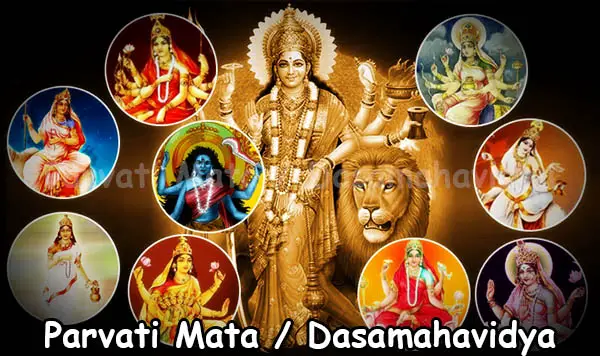According to Puranas, Parvati Devi was Sati or Dakshayani, daughter of Daksa in her first incarnation and married Shiva. Once, Daksha performed a great yagna and insulted Shiva by not inviting him or Sati. Even though Sati attended the yagna. But Daksha, did not acknowledge her presence or did not offer prasad for Shiva. Sati got depressed and ended her life by igniting herself through the fire of yagna.
After the death of Sati, Shiva went into deep meditation renouncing the world. Meanwhile, the demons lead by Taraka, drove devas out of the heavens. The gods sought a warrior to help and regain the celestial realm. Lord Brahma said that only Lord Shiva can help but he is oblivious the world. With the persistence of the Gods, Sati agreed to re-birth as Parvati. After intense austerities, goddess Parvathi succeeded in pleasing Shiva and to accept her.
The Divine Homemaker:
Parvati with her beauty inspired Shiva and he became a family man. Shiva being the fountainhead of the arts, dance and drama did not abandon as a hermit and continued to meditate. The attitude to refuse to share responsibilities angered Parvati. The consequent marital harmony between Shakti and Shiva brought stability and peace to the cosmos. Thus, Parvati became Ambika, the goddess of the household, marriage, motherhood and family.

The following are the ten different phases of goddess Parvati also known as Dasamahayidyas.
Kali: known for the goddess of time and destroyer.
Tara: known as the power of golden embryo also represented as void or boundless space.
Sodasi: means one who is sixteen years of age. This form represents perfection and fullness.
Vidya Bhuvanevari: signifies the forces of the material world.
Bhairavi: indicates the desires and excitements results in the destruction and death.
Vidya Chinnamasta: symbolises both as a life-giver and a life-taker. The nude self-decapitated goddess, holds her own severed head in one hand, a scimitar in another.
Dhumavati: personifies the destruction of the world by fire when ashes remain from the smoke.
Vidya Bagala: represents a crane-headed goddess that signifies the negative aspects such as hatred, jealousy, and cruelty of an individual.
Matangi: represents the power of domination.
Vidya Kamala: known as Lakshmi, the goddess of Fortune.
